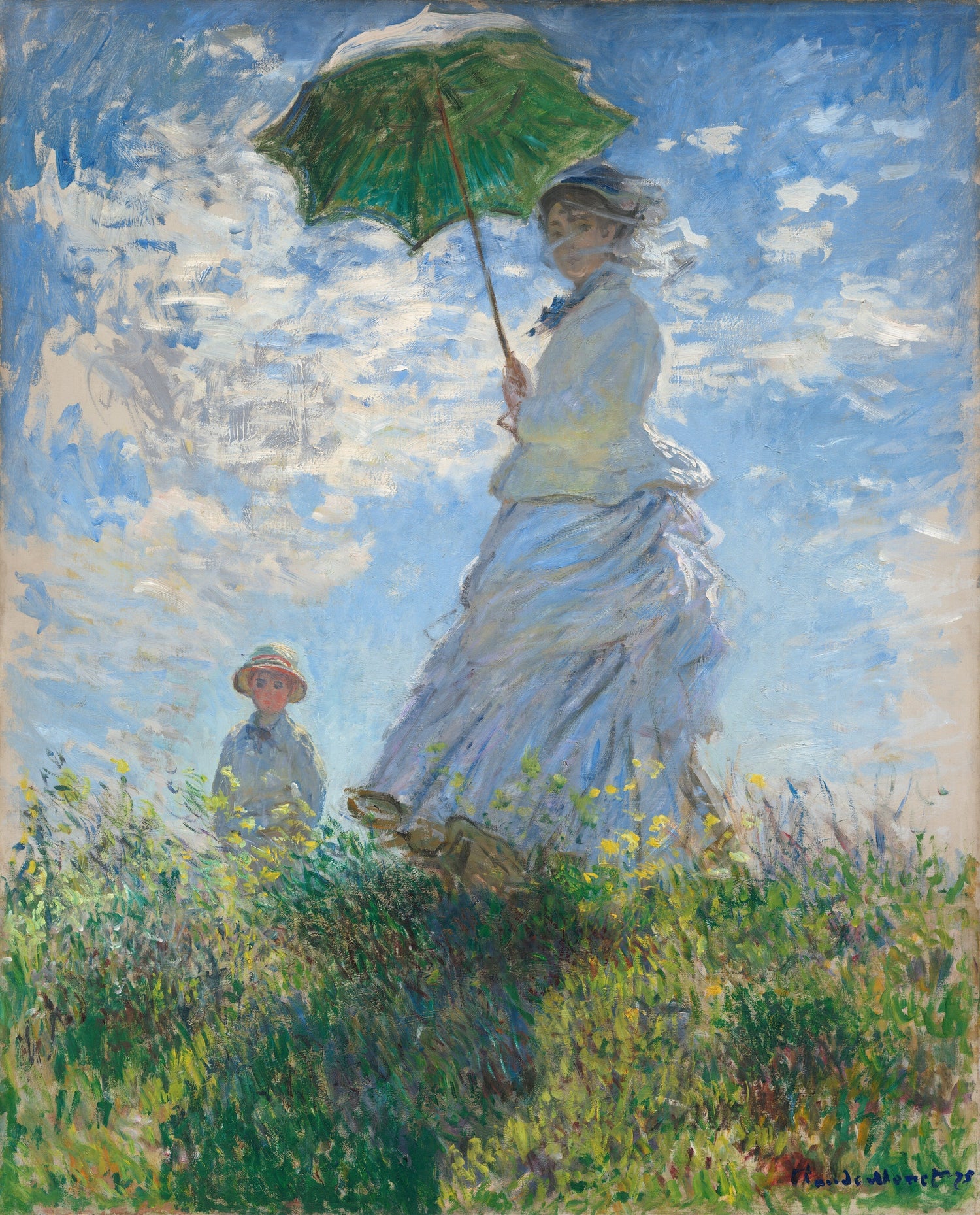
Woman with a Parasol, 1875
Claude Monet’s "Woman with a Parasol", painted in 1875, is a quintessential example of Impressionism’s revolutionary approach to capturing light, atmosphere, and fleeting moments. This stunning work features Monet’s wife, Camille, and their son, Jean, set against a breezy summer landscape. The painting conveys a moment of calm and grace, as Camille gazes into the distance while shading herself with a parasol, her white dress gently ruffled by the wind. The lush green grass and expansive sky provide a vivid backdrop, enhancing the sense of movement and immediacy.
Monet’s use of loose, expressive brushstrokes is particularly evident in the flowing fabric of Camille’s dress and the swaying grasses in the foreground. He skillfully captures the play of light and shadow, creating a sense of depth without relying on traditional outlines. The dappled sunlight on Camille’s dress and the parasol demonstrates Monet’s deep understanding of how light interacts with objects in nature. The soft blue and white hues in the sky, dotted with delicate clouds, further accentuate the light, airy atmosphere of the scene.
The composition of the painting is both dynamic and harmonious. Monet positions his figures slightly off-center, balancing them against the vast sky. The upward angle from which the scene is viewed, likely from Monet's crouched position, enhances the prominence of the figures, making Camille appear almost monumental against the open sky. This perspective invites viewers to feel as if they are standing at the base of a hill, looking up at this serene moment in time.
"Woman with a Parasol" exemplifies Monet’s desire to capture modern life and nature through direct observation, which was central to the Impressionist movement. Rather than focusing on fine details, Monet emphasizes the overall feeling of the scene—the sensation of wind, the warmth of sunlight, and the fleeting beauty of a summer’s day. The painting reflects Monet’s dedication to plein air painting, as it was likely created outdoors in one sitting, capturing the immediacy of the moment.
Monet’s choice of subject—a family outing in nature—also speaks to the intimate and personal themes present in his work during this period. Camille, who appeared in several of Monet’s paintings, was a frequent muse, and her presence here adds a layer of tenderness and personal connection to the piece. The parasol, a common accessory of the time, becomes more than a functional object; it symbolizes both elegance and the leisurely lifestyle that Monet often depicted.
In "Woman with a Parasol", Monet encapsulates the essence of Impressionism: a focus on light, movement, and the beauty of everyday life. The painting remains one of his most celebrated works, embodying the spontaneity and emotion that define his legacy as a master of modern art.
For those who admire art and its history, "Woman with a Parasol" is a timeless depiction of elegance and natural beauty. This artwork invites viewers to immerse themselves in the tranquility of nature, all while witnessing Monet’s extraordinary talent for transforming the ordinary into the sublime.
